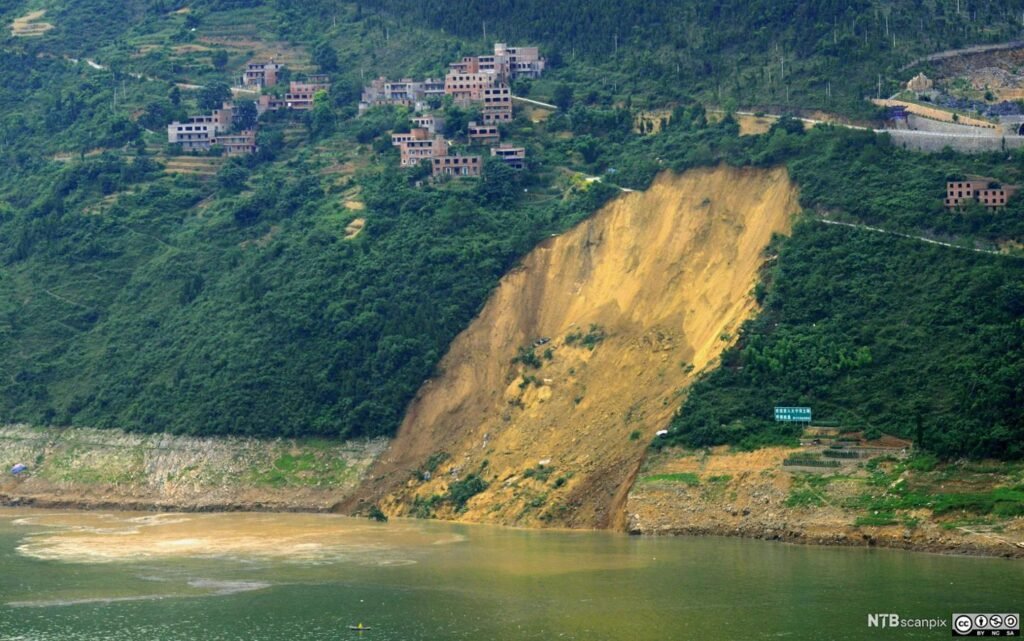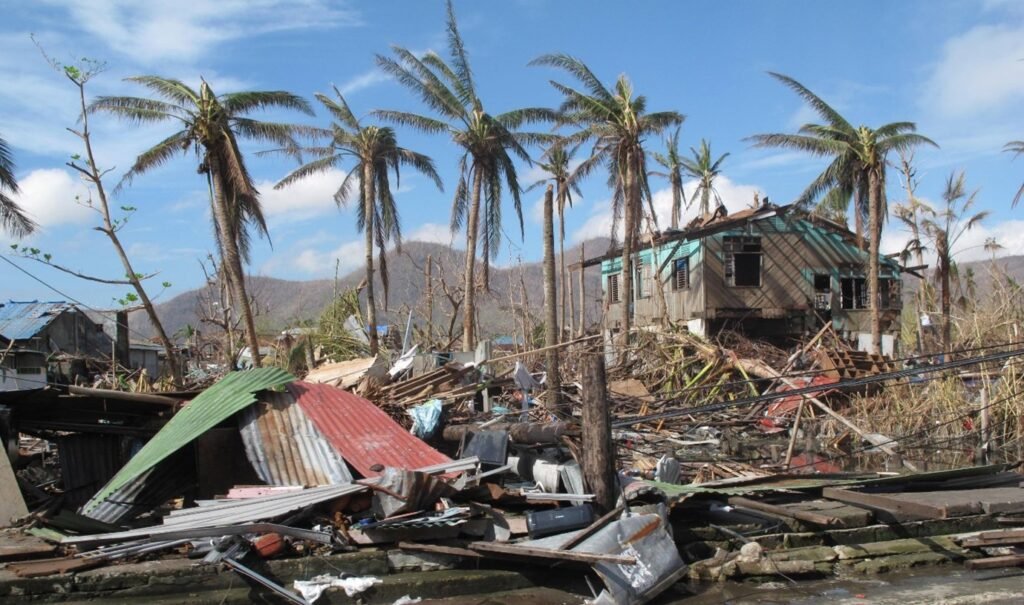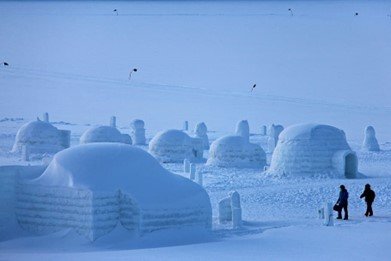Landslide and Avalanche
A landslide or an avalanche is a natural phenomenon that involves the movement of a large mass of material down a slope under the influence of gravity. Landslides can involve soil, rock, or debris, while avalanches mainly involve snow, ice, or rock. Both landslides and avalanches can be triggered by natural or human factors, such as weather, terrain, or activity. Both landslides and avalanches can cause damage, injury, or death to people, property, and infrastructure (UNDRR, 2017).
Landslides can have different types of movement, such as falling, flowing, sliding, or slumping, depending on the shape and behaviour of the material. Avalanches can have two main types of movement, such as slab or loose, depending on the fracture and cohesion of the snow (Kingsley, 2022).

Secondary hazards
Flooding
In 2010, a massive landslide in Zhouqu County, China, dammed the Bailong River, creating a lake that threatened to flood the town. The authorities had to use explosives to breach the dam and release the water.(https://earthobservatory.nasa.gov/images/45329/landslide-in-zhouqu-china).

Examples of Traditional and Indigenous knowledge
- In the Himalayas, some communities observe the flight patterns of birds, the movement of insects, and the colour of the sky to anticipate landslides.
- In Alaska, some Inuit communities listen to the sound of the snow and ice to detect the risk of avalanches (Clement, 2020).
- In Greenland, some Inuit communities build igloos and snow caves that can resist the pressure and weight of avalanches(Valeria, 2023).
- In Nepal, some communities construct stone houses on elevated platforms that can reduce exposure to landslides (Rakhal, Sharma, Ghimire, Adhikari, & Shrestha, 2021).

- In China, some communities plant willows and alders along the riverbanks and slopes to prevent landslides and floods (Wang, Meng, Chen, & Guo, 2016).
- In Japan, some communities plant bamboo on the hillsides to reinforce the soil and reduce the impact of landslides(Short, 2019).
- In Peru, some communities perform rituals and ceremonies to honour the mountain gods and ask for their protection from avalanches and landslides (Mitchell & Brown, 2022).
- In Indonesia, some communities perform dances and chants to calm the earth and prevent landslides (Gabrielsen, 2017).

References
lement, M. (2020). Roundtable: How Indigenous communities respond to disasters. Retrieved from The New Humanitarian: https://www.thenewhumanitarian.org/feature/2020/08/18/Indigenous-communities-disaster-humanitarian-response-coronavirus
Gabrielsen, H. P. (2017). Reflections from an Indigenous Community on Volcanic Event Management, Communications and Resilience. Retrieved from Observing the Volcano World. Advances in Volcanology: https://link.springer.com/chapter/10.1007/11157_2016_44#copyright-information
Kingsley, E. (2022). Avalanche vs Landslide Compared: Which Is More Devastating? Retrieved from A-Z: https://a-z-animals.com/blog/avalanche-vs-landslide-compared-which-is-more-devastating/
Mitchell, W., & Brown, P. (2022). Mountain peoples – adaptation and cultural persistence for a new century. Retrieved from FAO: https://www.fao.org/3/Y3549E/y3549e12.htm
Rakhal, B., Sharma, S., Ghimire, G. R., Adhikari, T. R., & Shrestha, R. (2021). Nepal’s communities brace for multihazard risks. Retrieved from Preventionweb: https://www.preventionweb.net/news/nepals-communities-brace-multihazard-risks
Short, F. (2019). Consideration might be given to planting bamboo to stop soil erosion and landslides. Retrieved from https://www.linkedin.com/pulse/consideration-might-given-planting-bamboo-stop-soil-erosion-short/
UNDRR. (2017). Disaster Risk Reduction Terminology. Retrieved from The Disaster Risk Reduction (DRR) Glossary: https://www.undrr.org/drr-glossary/terminology
Valeria. (2023). How does an igloo stay warm inside despite being made of snow? Retrieved from Medium: https://medium.com/@ValeriaVanhoord/how-does-an-igloo-stay-warm-inside-despite-being-made-of-snow-514975249eb9
Wang, S., Meng, X., Chen, G., & Guo, P. (2016). Effects of vegetation on debris flow mitigation: A case study from Gansu province, China. Retrieved from Researchgate: https://www.researchgate.net/publication/311987952_Effects_of_vegetation_on_debris_flow_mitigation_A_case_study_from_Gansu_province_China
https://www.thenewhumanitarian.org/feature/2020/08/18/Indigenous-communities-disaster-humanitarian-response-coronavirus
